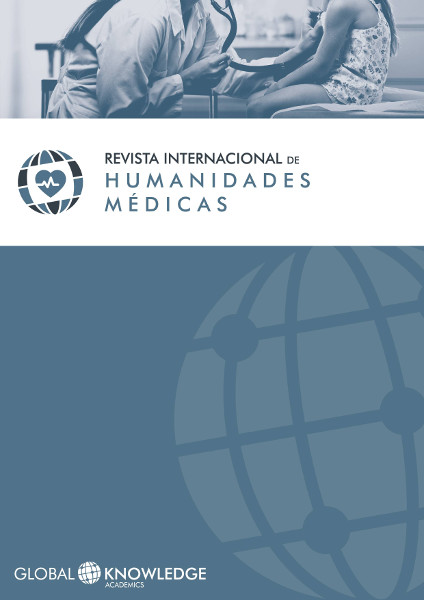The medical act in distorsion: relation no doctor no patient. Displacement of the power of decision to the group family-media-client state
DOI:
https://doi.org/10.37467/gka-revmedica.v5.829Keywords:
Bioethics, Therapeutic Cruelty, Relation Doctor-Patient, ClientelismAbstract
The relation doctor-patient has been developing: since the medical hegemony to the empowerish of the patient and since the mentioned binomial to the incorporation of others involved(Interdisciplinary team, family, friends, legal councellors). We shoud refer (even more when the case involves pediatric patients or incapables) to the relation treating team~family and its social context. There are 2 cases described that result paradigmatic to illustrate what would be a displacement of the gravitacional axis of power inside this relation and the appearance of a new hegemony. This hegemony would be represented for the family that throughout power relations established with politicians and media and built over the illness of the patient decides over the therapeutic measures to implement based in íts own priorities. This results into some benefits for the relatives, without being profitable in real benefits for the patient and that in extreme cases, it results in therapeutic cruelty.
References
Alonso, G. V. (2007). Acerca del clientelismo y la política social: reflexiones en torno al caso argentino. Revista del CLAD, 37, pp. 1-10.
Araya Umaña, S. (2002). Las representaciones sociales: ejes teóricos para su discusión. Cuadernos de Ciencias Sociales, 127. Costa Rica: FLACSO.
Boer, M. (2008). Planteos éticos de la práctica de la medicina en pacientes pediátricos con pronóstico reservado. Sus familiares y la búsqueda de alternativas terapéuticas. Rev. Hosp. Italiano B. Aires, 28 (2), pp. 95-100.
Burbinsky, B. & Naser, M. (1999). Reflexiones acerca de la Relación Médico-Paciente. Arch. Arg de Pediatría, 97 (1), pp. 43.
Cambra, U. C., Hevia, T. M., & Iturrizaga, A. U. (coord.). (2011). Comunicación y salud: nuevos escenarios y tendencias . Madrid: Editorial Complutense.
Cannellotto, A. & Luchtenberg, E. (comp.). (2008).Medicalización y sociedad. Lecturas críticas sobre un fenómeno en expansión . Argentina: Observatorio Argentino de Drogas (SEDRONAR)
Cruz-Hernández. M. (2004). Un renovado reto en la formación pediátrica: la relación médicopaciente familia. Educación Médica, 7 (4), pp. 119-12. DOI: https://doi.org/10.33588/fem.74.175
De Lillo, L. (2011). Del encarnizamiento terapéutico a una muerte digna. Revista de Bioética y Socioantropología en Medicina, VI (1). Disponible en: http://www.humanidadesmedicas.sld.cu/index.php/hm/article/view/33/56.
Feo, Ó. (2008). Las políticas neoliberales y su impacto sobre la formación en salud pública. Medicina Social, 3 (4), pp. 275-284.
Lázaro, J. & Gracia, D. (2006). La relación médico-enfermo a través de la historia. An. Sist. Sanit. Navar., 29 (3), pp. 7-17. DOI: https://doi.org/10.4321/S1137-66272006000600002
Martínez, O. C., Marchante, M. C. F., Morales, I. G., & Martínez, D. P. S. (2010). La relación médico paciente en la actualidad y el valor del método clínico. Medisur, 8 (5), pp. 110-120.
Mcnab, M.E. & Beca, J.P. (2010). ¿Existen límites en la decisión de los padres sobre el tratamiento de los hijos? Rev Chil Pediatr., 81 (6), pp. 536-540. DOI: https://doi.org/10.4067/S0370-41062010000600008
Moreno, C. & Rovira, C. (2009). Imaginarios: Desarrollo y aplicaciones de un concepto crecientemente utilizado en las Ciencias Sociales. Investigació n para la Polí tica Pú blica, Desarrollo Humano, HD-08-2009, RBLAC-UNDP, New York
Ocampo-Martínez, J. (2002). La bioética y la relación médico-paciente. Cir Ciruj, 70 (Enero- Marzo), pp. 55-59.
Rodríguez Arce, M.A. (2008). Relación Médico-Paciente . La Habana: Editorial Ciencias Médicas.
Downloads
Published
How to Cite
Issue
Section
License
Those authors who publish in this journal accept the following terms:
- Authors will keep the moral right of the work and they will transfer the commercial rights.
- After 1 year from publication, the work shall thereafter be open access online on our website, but will retain copyright.
- In the event that the authors wish to assign an Creative Commons (CC) license, they may request it by writing to publishing@eagora.org









